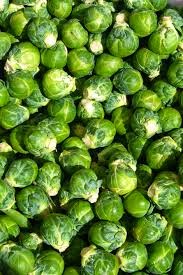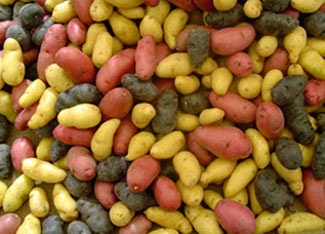I love fancy breakfasts (especially when they’re served to
me at a great restaurant with bottomless mimosas and a copy of the Sunday
newspaper). But now that fancy breakfast involves finding a babysitter and someplace that can accommodate my
husband’s complicated dietary restrictions, it’s a lot more likely to happen at
home.
The story of Christmas breakfast really illustrates how
complicated things have gotten. For years, my mom made scrambled eggs with
cream cheese, Canadian bacon, and fresh croissants on Christmas morning; and
when I moved out and had my own home, that was the breakfast I made on
Christmas. It was a Very Big Deal.
The year my daughter was old enough to eat solid food, she
developed an allergy to eggs. I was sad, but not so sad that I was going to
start making two breakfasts (and I try not to make anyone have to fill up on
side dishes at my table, even the two-year-old). On to Plan B, an outstanding recipe
for yeast-risen waffles. They were perfect waffles: crispy on the outside,
creamy on the inside, with just a little tang. They became the new Christmas
tradition.
Then my husband developed a severe gluten intolerance. Sigh.
On I went to a bell pepper/onion/thyme mixture, sauteed in butter and finished
in the oven with an egg on top (the kids skipped the eggs) and some hash browns.
When my husband cut dairy out of his diet to further manage his symptoms, I
switched to olive oil.
After a couple of years, he stopped being able to tolerate
nightshades – no potatoes, tomatoes, eggplants, or peppers. That year, I made a batch of scones and sat in
the kitchen eating them by myself. I might have cried. I think the rest of the family
had oatmeal.
Then I found this marvelous sweet potato hash recipe, which
almost everyone likes (I’ve lowered my standards and let my son fill up on
fruit and bacon if he wants). I was procrastinating on a project this weekend,
so making an elaborate breakfast seemed like a really good idea, and we were
still dealing with odds and ends from Thanksgiving dinner. This recipe was the
end result.
Both recipes are based on ones found in Edon Waycott’s Breakfast All Day, which makes me want to move to California so I can live down
the road from a fig stand and crash her house for meals.
Sweet Potato and Ham Hash
2 large sweet potatoes, peeled and diced (3/4 inch is just
about right)
2 shallots, peeled and chopped (feel free to substitute an
onion if you don’t have a shallot on hand – no need to be a purist about hash)
 2-3 slices ham, roughly chopped (this is where you have to
start using your judgment – the Christmas ham slices are a lot bigger than the odds
and ends in the deli drawer of my fridge. Shoot for a cup or so of ham pieces
and adjust to your own preference)
2-3 slices ham, roughly chopped (this is where you have to
start using your judgment – the Christmas ham slices are a lot bigger than the odds
and ends in the deli drawer of my fridge. Shoot for a cup or so of ham pieces
and adjust to your own preference)
Olive oil
Thyme
Salt and pepper
This is a great time to pull out that non-stick pan you’ve
been ignoring after falling in love with cast iron. Heat a decent-sized splash
of olive oil in the pan over medium-high heat and add the sweet potatoes. Turn
them a few times to make sure they all get some oil on them, then let them cook
for a few minutes undisturbed.
After about 5 minutes, turn the potatoes gently and lower the
heat a little if needed. Ignore them some more. Decide what else you’re going
to have with this; a poached egg on top is just great.
In another 5 minutes, check the potatoes. Are they starting
to get a little soft? Great! Add the ham and shallots, stir everything up, and sprinkle
a little thyme, salt, and pepper on the mixture. Cook this until the onions are
soft and the sweet potatoes are tender but not mushy, usually about another 10
minutes (most of which you’ll spend doing something besides paying attention to
this pan). The ignoring part is really important; if you stir them a lot, they’ll
turn into a chunky sweet-potato-and-ham mush – which is, admittedly, delicious
as well.
Ah, you want the deluxe version? I made corn crepes to go
along with the hash, again based on Edon Waycott’s recipe. We don’t do
gluten, so I used a pre-made blend we’ve been experimenting with; and I keep
forgetting to buy more cornmeal so I used corn flour. This wrought havoc on the
flour-to-water ratio and I learned a few lessons about crepes.
- Use a non-stick pan.
- Brush the pan with oil (or butter, if you’re lucky enough to be eating dairy) between each one
- Don’t walk away to answer the door, even if it's your friend bringing you a Coach purse
- The batter should be thin enough to pour but not so watery that the batter never sets
- You’re going to throw away the first few crepes
- Puns about crepes are not funny to anyone except you
Cornmeal crepes
1 ½ cups almond milk
3 eggs
½ cup GF flour mix (we’re using Namaste brand Perfect Blend,
which is a bit of a moisture hog)
1/2 cup corn flour (if you have cornmeal in the house, by
all means try it – and please let me know how it turns out)
1 teaspoon sugar
Pinch of salt
Put all the ingredients in the blender and mix until
well-combined. If it’s the consistency of cake batter, add a little more almond
milk and mix again. Recall that you’re not actually developing the gluten in
the flour – which you would if you were using flour – so you’d have a really
hard time over-mixing this. It’s one of the few compensations of gluten-free
baking.
Heat a 6-inch non-stick pan over medium heat. Brush the pan
with a little oil or butter, then pour in about 3 tablespoons of batter and
tilt the pan so the batter spreads out very thinly. This sounds really easy but
the first few might make you lose confidence in yourself…. Move fast and don’t
worry if they turn out thicker or don’t fill up the whole pan or whatever. They’re
going to tasty and that’s really what counts.
When the top of the crepe sets, flip it over and cook until
the bottom of the crepe is lightly browned. Fold the crepe in half and transfer
it to a plate, then repeat. Once you get the hang of it, this part goes very
quickly.
To serve:
 Put about ¼ cup of hash in the crepe and fold it over. Top
with cranberry-orange relish (my father-in-law’s recipe – I’ll see if I can pry
it out of him) and drizzle with crème fraiche. Sprinkle with rosemary Falksalt.
Put about ¼ cup of hash in the crepe and fold it over. Top
with cranberry-orange relish (my father-in-law’s recipe – I’ll see if I can pry
it out of him) and drizzle with crème fraiche. Sprinkle with rosemary Falksalt.
OK – about Falksalt: Go buy some. I discovered it a few
weeks ago and I’m putting it on EVERYTHING. The big crystals are crunchy and
they look beautiful, and the flavored varieties are just amazing on so many
things (including some I didn't take pictures of, really):
 |
| Deviled eggs with black Falksalt |
 |
| Roasted sweet potatoes with hazelnut oil and citron Falksalt (and drizzle it with creme fraiche before you eat it - OMG) |
 |
| My new favorite toy (and a silver salt cellar - how cool is that?) |



















